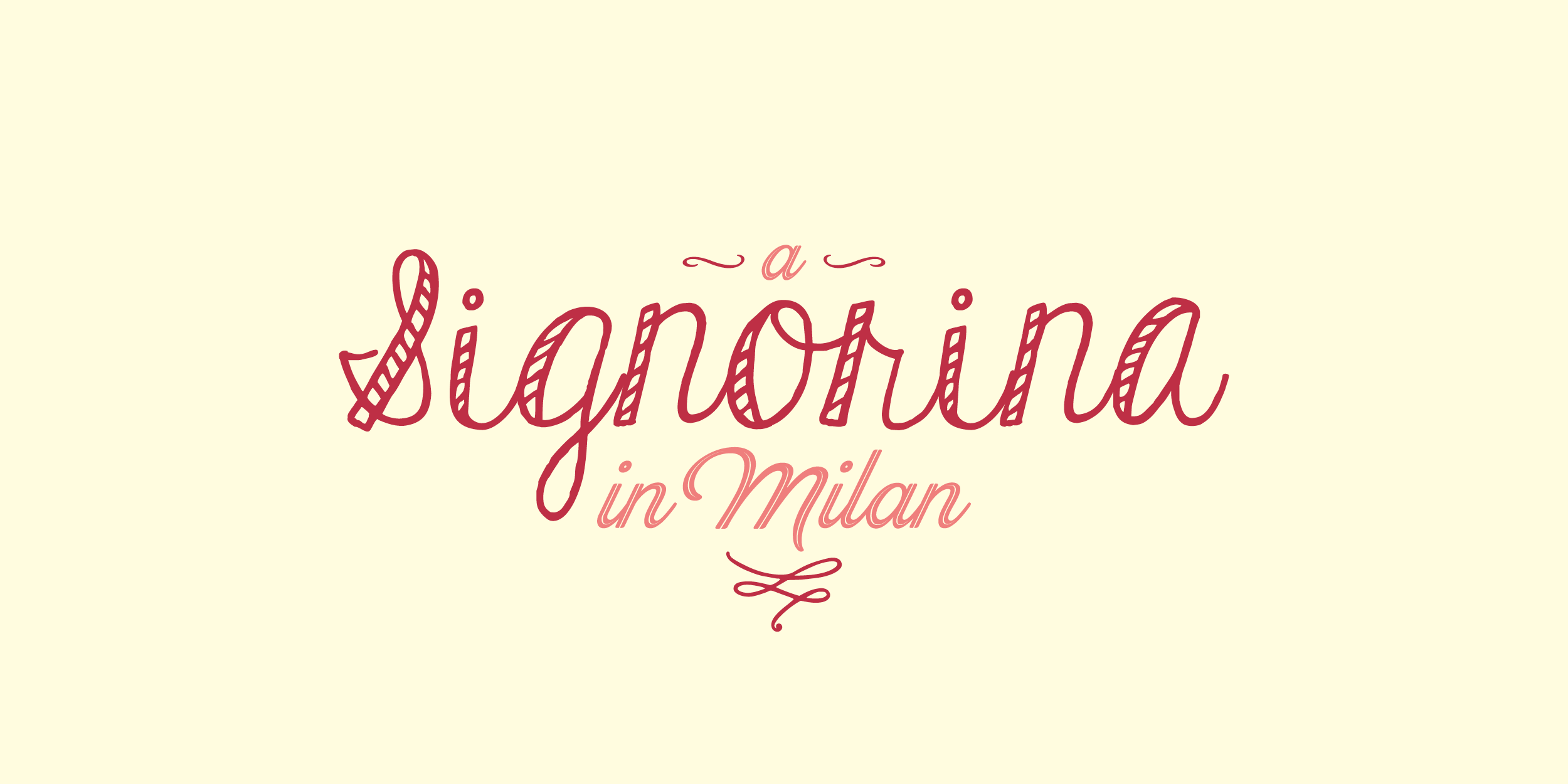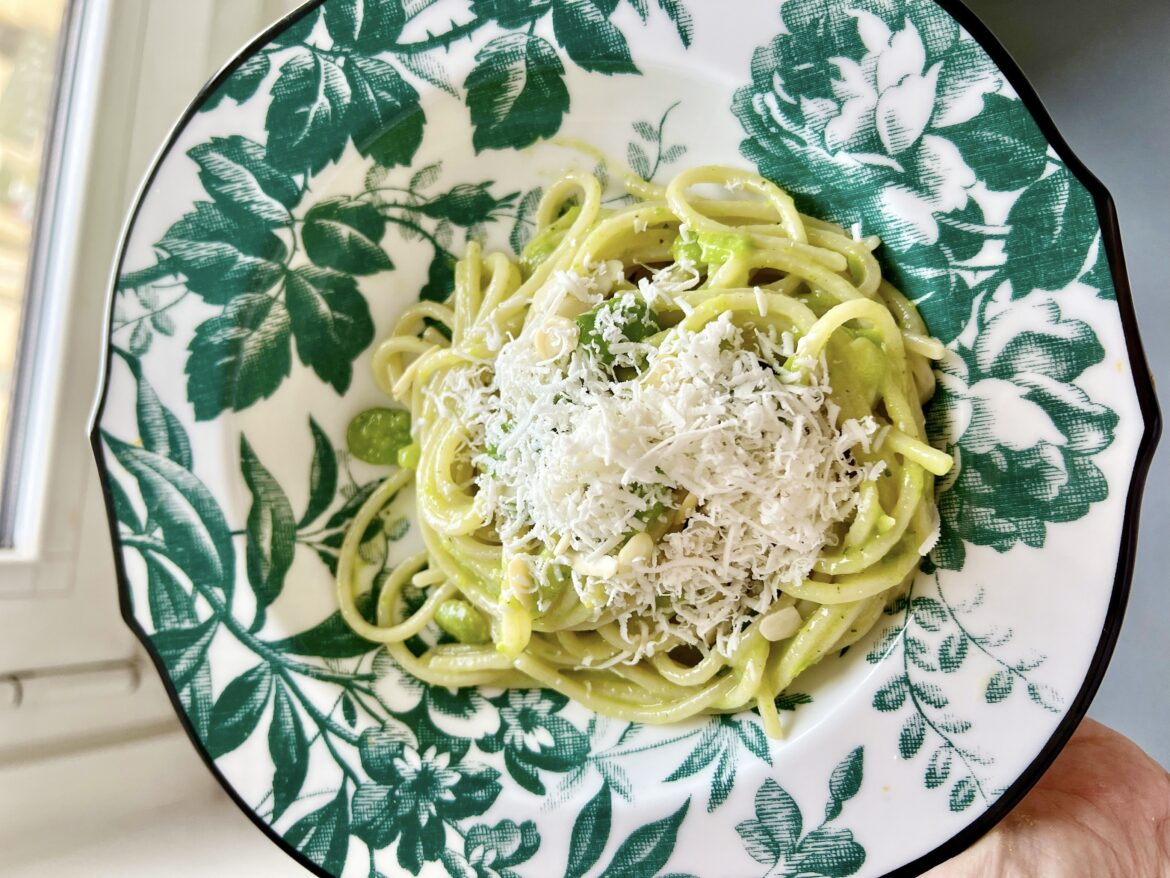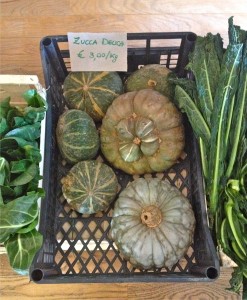I don’t remember the first time I tasted fava beans. But I can confidently state that they’re the first veggie that led me to appreciate (and lament) the fleetingness of seasonality. I can’t pinpoint the exact moment, but it happened during my former restaurant-publicist life in New York. I’ve enjoyed the silky, buttery, slightly bitter delights alongside ramps, blended into a purée slathered on top of a bruschetta, and tossed into pasta or risotto–always at the hands of the city’s finest chefs.
Yet, it wasn’t until I moved to Italy and started cooking that I experienced fava beans in their purest form at the market come spring: heaps of broad, long curved, leathery green pods that loosely encase the beans, their barely visible outlines pressed gently against their covering.
When I first started cooking with fava beans, I played it safe. As much as I enjoyed the zen-like, meditative effects of the time-intensive peeling followed by the second round of sliding the blanched, vibrant green legumes out of their opaque sheaths, I would run out of patience and prepare something simple so I could eat my fava beans as close to post-blanching. as possible But once I started managing my appetite and timing better, I grew more emboldened, blending them into a purée for risotto or pasta, and I haven’t looked back.
Fava bean season is officially underway (and almost over), and in April, I had fava beans three different ways in a week: traditionally, in their pods to eat raw alongside pecorino, at Stadera; mixed into a creamy macco di fave that was then deep fried into perfect little square cubes at Ratanà, and the fava bean pasta to end all fava bean pastas: spaghetti alla chitarra over a bed of fava pesto with mint, almonds, and cacio ricotta cheese at Pastamadre in Porta Romana. If I ate the latter at someone’s home, I would have treated myself to a second or third helping.
I couldn’t stop thinking about that dish long after dessert, so I thought, why not attempt it? So, here’s my version of spaghetti with fava beans inspired by the dish I loved at Pastamadre – mine turned out pretty darn delicious if I do say so myself. I don’t remember if (Milanophiles guest!) Francesco Costanzo’s version had spring onions, but I chopped some up to toss them into mine.
Note: I don’t exactly measure the ingredients, while I’m cooking, but I’ll do my best to be precise. One tip: when buying fava beans, I’ve learned to err on the side of more–much more. I never buy less than 2 kilos.
Spaghetti alla chitarra with fava bean pesto, almonds, mint, and ricotta salata recipe
Ingredients
150 – 300 grams spaghetti alla chitarra (I used Mancini)
2 kilo fava beans (about 4.5 pounds)
4 garlic cloves (optional – I always overdo it with garlic)
1 spring onion
ricotta salata cheese, grated
white wine (or vegetable broth)
slivered almonds
extra-virgin olive oil
For the fava pesto:
fava beans
pecorino
garlic
extra-virgin olive oil
mint
First, use about ¾ of the shelled and blanched fava beans to make the fava bean pesto (aka marò). I used this recipe from Cucchiaio d’Argento, to which I added a couple of drops of fresh lemon juice.
Bring a large pot of water to a boil to cook the pasta.
In the meantime, toast the slivered almonds in a saute pan for around 5 minutes (until golden). Remove from the pan and set aside. Wipe the pan clean with a paper towel once cooled. (Yes, I’m paying homage to Ottolenghi.)
Drizzle the pan with olive oil, and cook the garlic and spring onions over low-medium heat for a few minutes until the garlic starts to turn golden. Then add the fava beans and let cook. Once the liquid evaporates, add some white wine, turn up the heat, and the beans, garlic, and spring onions cook.
When the pasta water starts boiling, add salt and then cook the spaghetti until very, very al dente.
If you’re draining the pasta, set aside some of the pasta cooking water first. Otherwise, use tongs to place the pasta directly in the saute pan. Pour some cooking water into the saute pan, and let the spaghetti finish cooking there, letting the liquid emulsify into a sauce. Once al dente, remove from the heat, add fava bean pesto and some almonds, and mix.
Distribute into plates, and top with remaining almonds and ricotta salata cheese. Serve and enjoy immediately!
.





